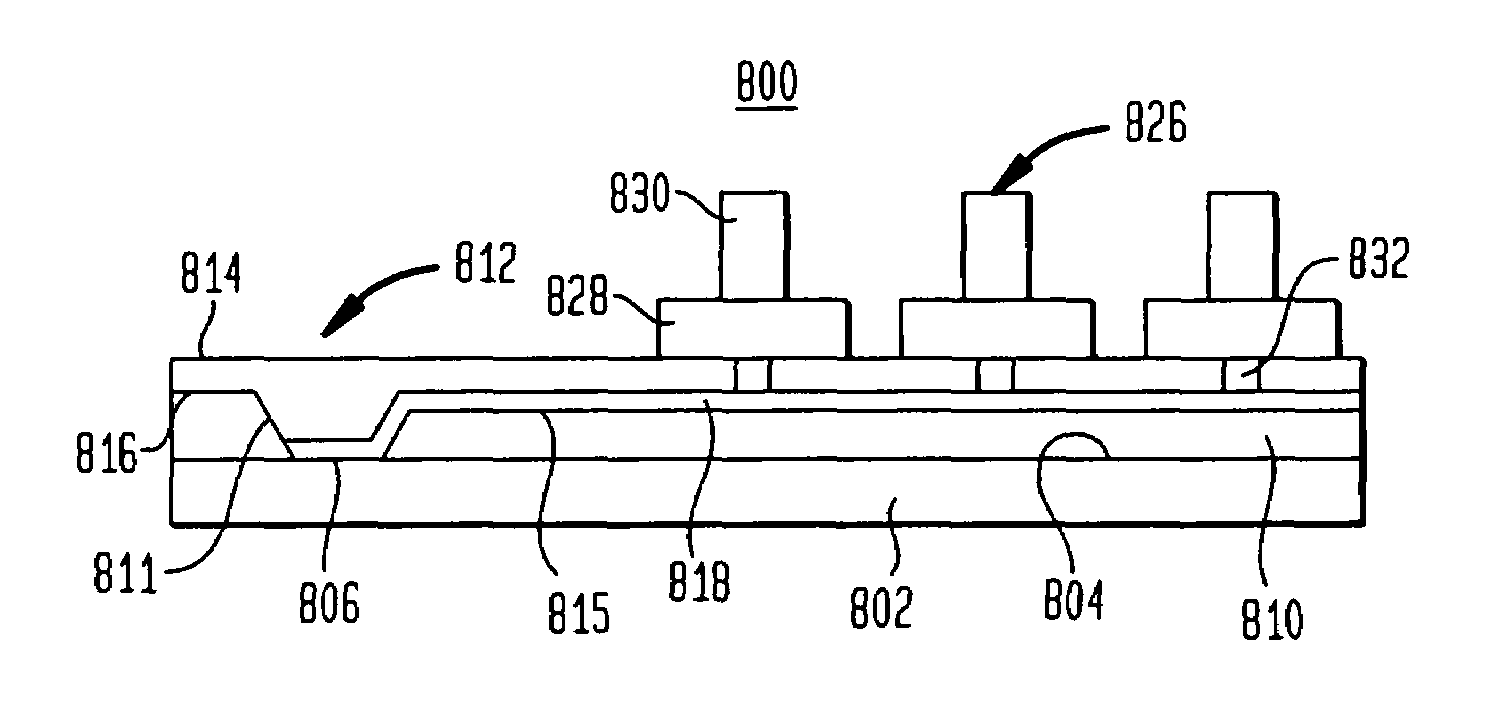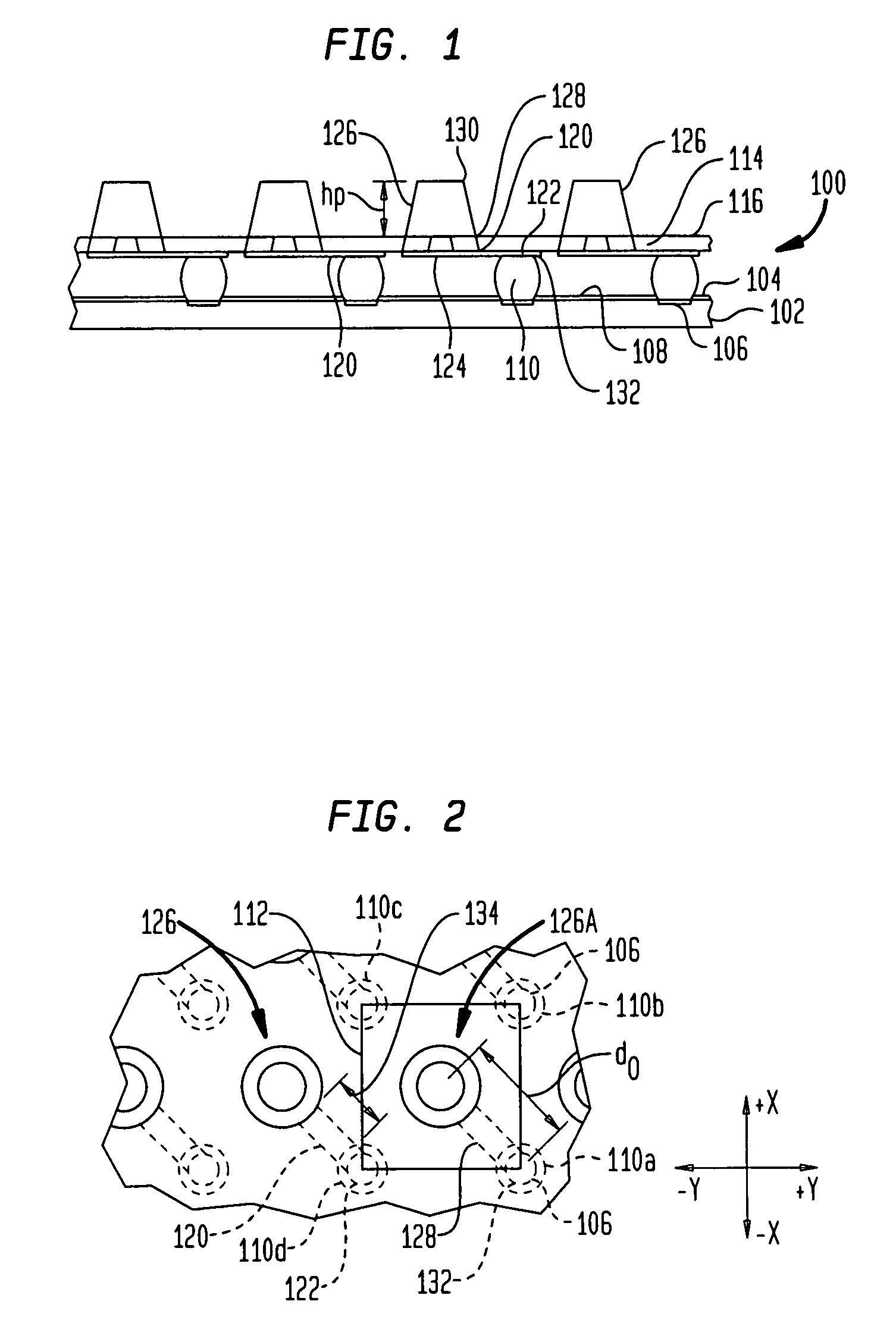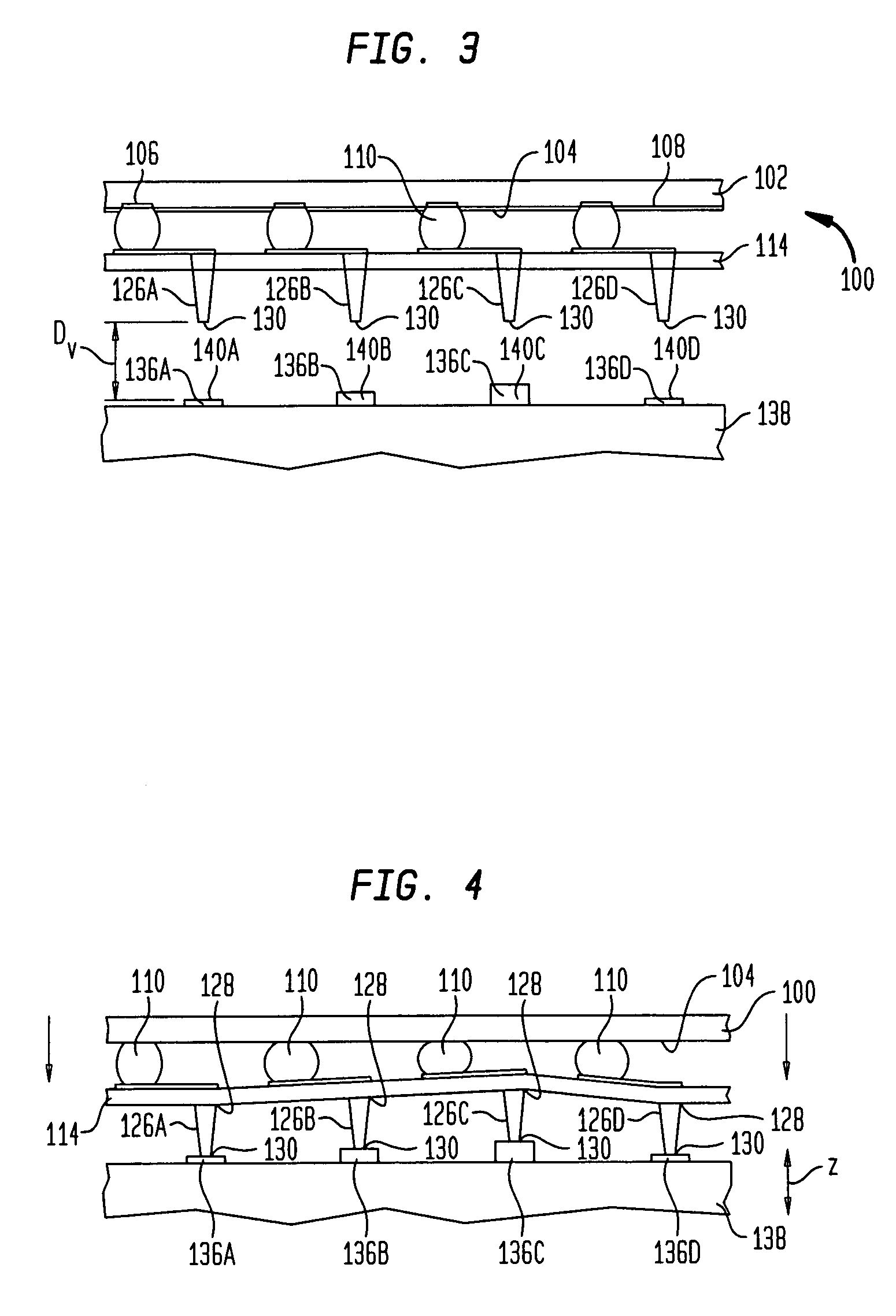Microelectronic packages and methods therefor
a technology of microelectronic packages and microelectronic components, applied in the direction of semiconductor devices, semiconductor/solid-state device details, electrical apparatus, etc., can solve the problems of imposing stress on solder, terminals moving relative to the contact, assembly including packages can suffer from stress, etc., to achieve greater height and higher wiring density
- Summary
- Abstract
- Description
- Claims
- Application Information
AI Technical Summary
Benefits of technology
Problems solved by technology
Method used
Image
Examples
Embodiment Construction
[0066]Referring to FIG. 1, in accordance with one preferred embodiment of the present invention, a microelectronic package 100 includes a microelectronic element, such as a semiconductor chip 102, having a front or contact bearing face 104 and electrical contacts 106 exposed at face 104. A passivation layer 108 may be formed over the contact bearing face 104 with openings at contacts 106.
[0067]The microelectronic package 100 also includes conductive support elements 110 such as solder balls in substantial alignment and electrically interconnected with contacts 106. As best seen in FIG. 2, contacts 106 and support elements 110 are disposed in an array which in this case is a rectilinear grid, having equally spaced columns extending in a first horizontal direction x and equally spaced rows extending in a second horizontal direction y orthogonal to the first horizontal direction. Each contact 106 and support element 110 is disposed at an intersection of a row and a column, so that each...
PUM
 Login to View More
Login to View More Abstract
Description
Claims
Application Information
 Login to View More
Login to View More - R&D
- Intellectual Property
- Life Sciences
- Materials
- Tech Scout
- Unparalleled Data Quality
- Higher Quality Content
- 60% Fewer Hallucinations
Browse by: Latest US Patents, China's latest patents, Technical Efficacy Thesaurus, Application Domain, Technology Topic, Popular Technical Reports.
© 2025 PatSnap. All rights reserved.Legal|Privacy policy|Modern Slavery Act Transparency Statement|Sitemap|About US| Contact US: help@patsnap.com



